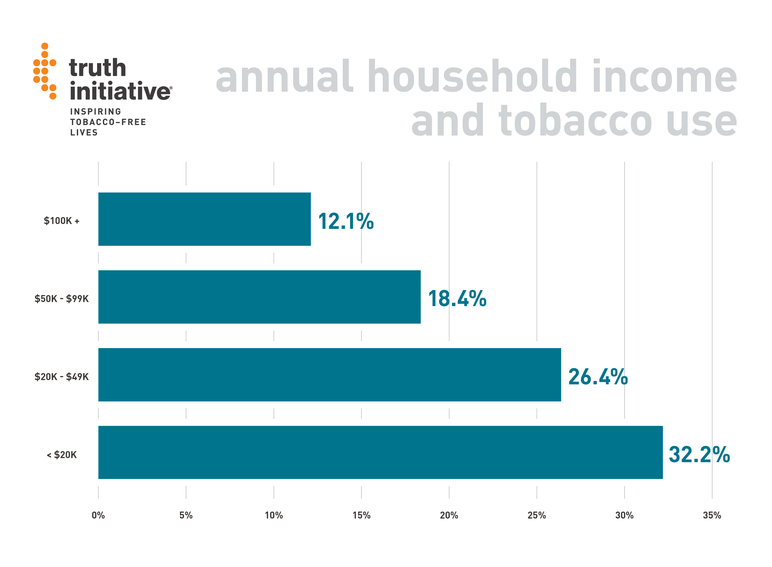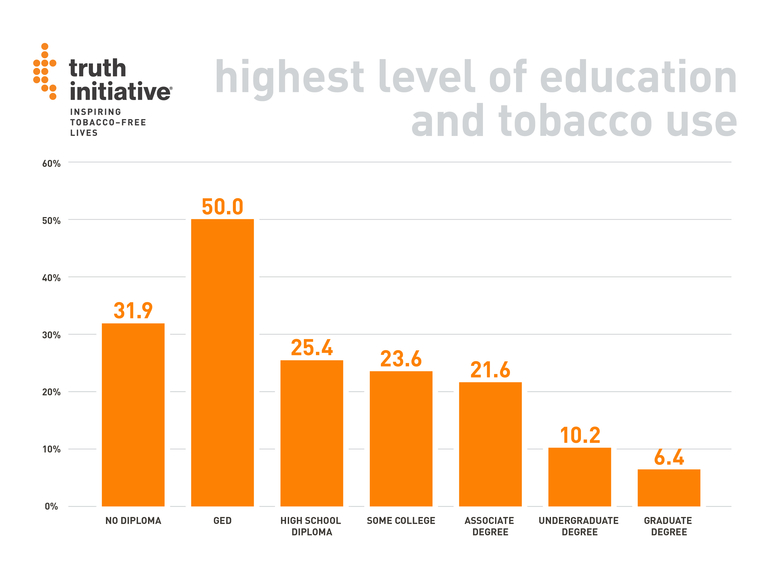The economics of tobacco: what education and income tell us about smoking
Data released this summer by the U.S. Centers for Disease Control and Prevention serve as a reminder that, despite decades of progress in the fight to end tobacco use, much work remains, particularly among lower income households.
While 21.3 percent of U.S. adults use tobacco products every day or on some days, there are wide variations tied to socioeconomic status, according to CDC. Tobacco use rises to 32.2 percent in households earning less than $20,000 per year, and drops to 12.1 percent in households earning more than $100,000 per year.

Likewise, cigarette smoking and other tobacco use is more prevalent among adults with less education. Nearly 32 percent of adults without a high school diploma use tobacco every day or some days, and 50 percent of adults with a GED use tobacco every day or some days. Tobacco use declines to 10.2 percent among adults with an undergraduate degree and to 6.4 percent among adults with a graduate degree.
Previous research from Truth Initiative® indicates that greater financial dependence is associated with increased current tobacco use among young workers. For example, the odds that a young adult who used tobacco and was very financially dependent on their parents and working part time were 7 times greater than for their financially independent peers.

The CDC data came amid renewed focus on socioeconomic inequalities. In July, McKinsey Global Institute reported on what it called a “growing debate in advanced economies about income inequality.” The global consulting firm specifically cited “the sharp increase in the proportion of households in income groups that are simply not advancing” and pointed out that “the hardest hit are young, less-educated workers.”
Throughout the month of August, Truth Initiative will be highlighting the ways that socioeconomic disparities impact tobacco use.
More in targeted communities
Want support quitting? Join EX Program
By clicking JOIN, you agree to the Terms, Text Message Terms and Privacy Policy.
Msg&Data rates may apply; msgs are automated.


